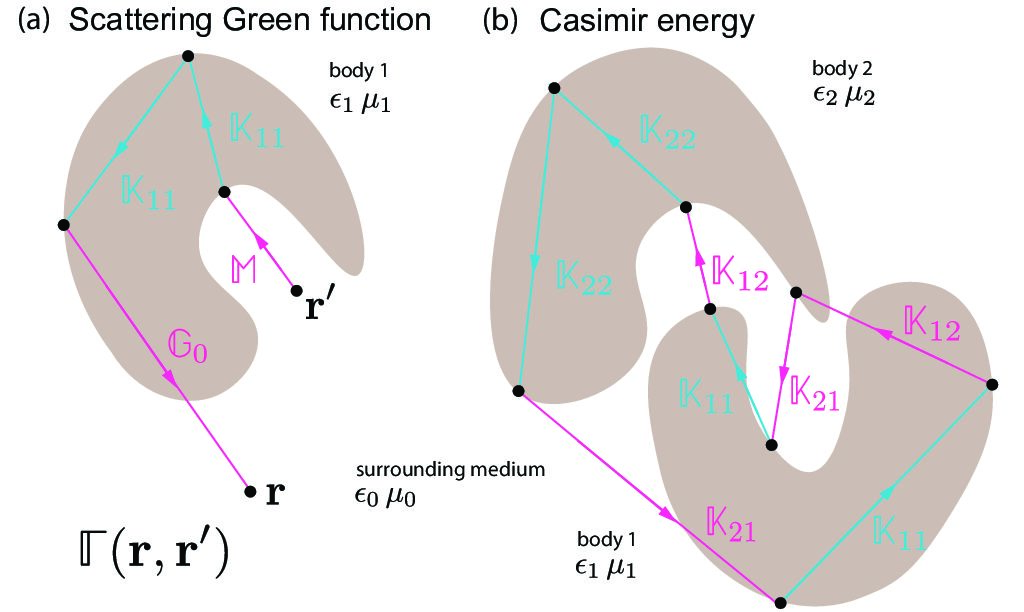I’m glad to announce that our most recent work on general methods to compute fluctuation forces and heat radiation and transfer in nano-systems has been accepted for publication in Physical Review Letters.
Quantum physics tells us that light (or the electromagnetic field) is quantized. One of the most striking predictions of quantum physics is the interaction of the electromagnetic vacuum with atoms and macroscopic bodies. A spectacular manifestation of this interaction is the Casimir force. Enormous progress in force sensing techniques and the fabrication of nano-structures have highlighted impressively the practical relevance of this quantum effect. Importantly, experiments have provided strong evidence that Casimir forces cannot be described by often used approximations such as the proximity approximation. Over the last decade, experimental studies of Casimir forces have advanced faster than theory. The reason for this originates from the above described difficulties to solve diffraction problems. In fact, a marriage of the classical theory of diffraction and quantum electrodynamics has shown that in principle Casimir forces can be computed from the scattering amplitudes of the interacting bodies. The corresponding scattering approach, however, is fraught with various problems from slow convergence and the lack of exact result for the scattering amplitude. This makes a new theoretical formulation for the precise prediction of Casimir forces highly desirable. Purely numerical methods are often limited by computational power and time, and are less effective than originally hoped.
In our work we report a unique approach to efficiently and accurately compute Casimir forces within current experimental resolution for arbitrary shapes and materials. Our method involves a new level of abstraction as it treats wave scatterings within an isolated object on an equal footing as scatterings between different objects. This has a number of important advantages over previous approaches: (1) the bodies’ scattering amplitudes are not required, (2) it is a basis-free formulation, and hence no partial wave bases are needed, and (3) there are no limitations on the relative placement of objects. This enabled us to study Casimir forces in previously theoretically inaccessible geometries. From our approach, for the first time, we provide precise results for the Casimir force acting on Sommerfeld’s knife edge in the experimentally important, realizable case of real materials such as gold and silicon.
Our work is an important step towards delving deeper into the fascinating world of macroscopically observable consequences of quantum dynamics, with direct relevance to interdisciplinary research at the interface between quantum physics, soft-matter physics, and nano-technology.
